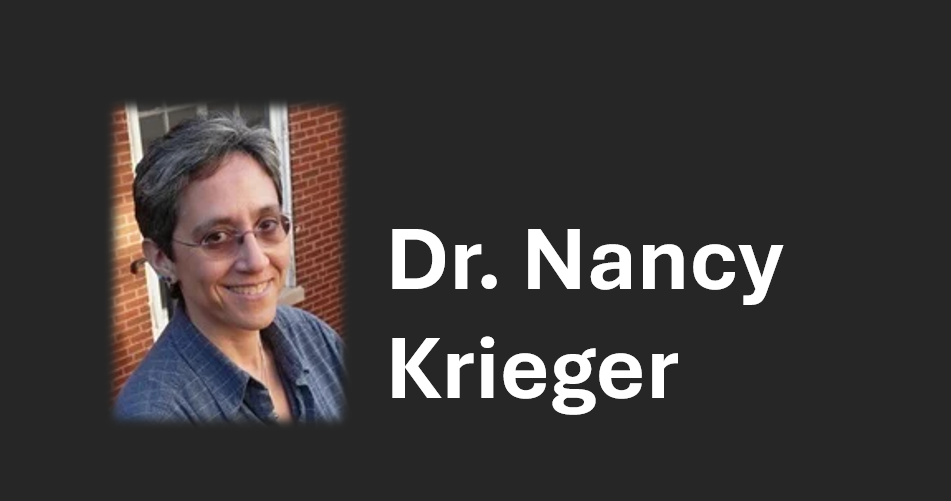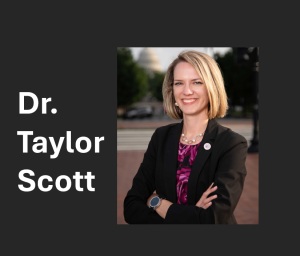
A conversation with Nancy Krieger: Election Special
In this interview, we explore the insights of Dr. Nancy Krieger, a social epidemiologist and Professor of Social Epidemiology at the Harvard T.H. Chan School of Public Health. With over three decades of experience in social justice, science, and public health, Dr. Krieger’s work delves into the societal determinants of health, emphasizing the critical role of governance and political ideology on population health.
Her recent working paper, Politicians, Power, and the People’s Health: US Elections and State Health Outcomes, 2012–2024 (will download a pdf) examines how state-level political metrics relate to health outcomes across the United States. This descriptive study offers a nuanced view of how political conservatism correlates with poorer health metrics, including premature mortality and lack of health insurance, shedding light on how electoral choices influence public health at both the state and national levels.
Your study highlights how governance structures and political ideologies can influence health outcomes beyond specific policies. How do you think political polarization will impact health outcomes in the coming decades? And what trends are you seeing emerge from your research?
First, I want to emphasize that our study is a descriptive, correlational analysis—it’s not a causal study. This distinction is crucial for those familiar with how these types of analyses work. We undertook this research to start building evidence, evidence that could motivate others to explore any causal relationships, if they exist, behind the patterns we observed in our data. This approach moves beyond simply reflecting opinions. While political polarization does involve opinions, it also has real, embodied effects on people’s health and on health inequities.
Now, there are multiple ways political polarization could evolve, depending on which political agendas are dominant at any given time. So, there’s no single answer to your question. But I do think it’s essential for those in public health and anyone concerned with health and health inequities to understand how the political context of their time, created by people, impacts the overall health of the population and the degree of health inequities, for better or worse.
Many public health professionals may feel uncertain about how to effectively influence policy or engage in policy-level discussions. What strategies have you found helpful for enabling public health professionals to connect with policymakers, especially in more politically conservative states?
I want to start by clarifying my expertise relative to the question. As a social epidemiologist, my focus is on understanding who and what shapes the health patterns we see in society, particularly in the U.S. today. While our study spans from 2012 to 2024, I don’t work directly with policymakers or operate within state government. My aim, however, is for the data my colleagues and I generate to support those policy conversations. Importantly, our data isn’t just for public health professionals and policymakers—it’s also intended for the public. There’s a significant gap in understanding the links between political measures and health outcomes, which we hope to address.
Our research highlights various health outcomes affected not only by enacted policies but also by broader political dynamics, including the voting patterns of politicians and the concentration of power in state governments, known as ‘trifectas.’ A trifecta, where one party controls both the governor’s office and the legislature, often restricts certain policy options (in ways that can potentially be harmful or helpful for health equity), while a divided government can open up others.
Understanding the potential ‘levers’ for policy influence involves recognizing how these different political structures operate. For example, the broader electorate plays a crucial role in shaping who holds office, albeit influenced by factors like gerrymandering and voter suppression – which means that not everyone’s vote counts equally and not everyone is able to vote who is eligible to vote. Thus, in a democratic society, understanding ‘the will of the people’ is complex. As public health professionals, especially epidemiologists, our goal should be to consider who holds power within each state or country’s governance structure. This focus can guide us as we explore potential causal relationships affecting population health.
Yes, our analysis focused on states as the unit of analysis. Ideally, we’d also examine data within states, such as legislative districts, but that was beyond the scope of our team’s work. It’s also important to note that things don’t neatly separate into federal and state issues. Take Medicaid expansion, for example: while it’s a federal policy, states decide whether to adopt it. In some cases, even when state politicians opposed expansion, voters pushed for and successfully passed it.
This highlights the complex power dynamics between a state’s people, their representatives at both the state and federal levels, and how federal policies influence state-level outcomes. For instance, current debates over reproductive justice and abortion are playing out at both levels. The original decision on Roe v. Wade was based partly on privacy rights, which were protected by the state. Now, with its reversal, states are left to set their own policies, and the response varies widely. Yet, these issues still play out nationally in terms of what kind of emergency care must be provided for obstetric conditions.
Our research aimed to consider how both state and federal representatives, as well as the concentration of political power in states, shape health outcomes. We examined outcomes across the life course—infant mortality, premature mortality, health insurance, vaccination rates for young children and older adults, and maternity care deserts. These are areas highly responsive to policy changes.
Some outcomes, like breast cancer rates, don’t change quickly; they evolve over time. In contrast, poverty rates among children dropped dramatically during COVID relief efforts and then rose again when those measures ended. So, when asking questions about policy impact, it’s essential to consider the timeframe—how long it might take for political decisions to visibly affect health outcomes.

Preventing unnecessary suffering is at the core of public health—which must be grounded in social justice—so that we can expose inequities and create conditions where everyone can thrive.
In many preventive research areas, outcomes take a long time to materialize. Staying on the topic of analysis levels, I’m curious—could this type of analysis, if data were available, be expanded to the city or county level? For example, could it examine how different health departments track outcomes and how local ideological influences play a role?
Absolutely. The key issue, of course, is data availability. While voter political leanings are available down to the precinct level, there are challenges with spatial alignment when linking these data to census units. For example, while precincts align with census blocks, they don’t necessarily match up with census tracts or county boundaries, which adds complexity for those analyzing the data.
The larger question is about understanding which levels of government drive social and environmental exposures, like policies on the climate crisis, fossil fuel use, and wildfire management—issues that often extend beyond state boundaries and are heavily influenced by federal policies. Public health professionals working with policymakers need to understand where to direct their advocacy to effect real change. An informed public, aware of these factors, can push for healthier conditions and reduce health inequities.
Sometimes, cities may push for state action, but states can prevent cities from implementing certain policies through preemption laws. So, understanding the relationships between different levels of governance and power—not just political leanings—is critical. This also involves paying attention to key roles beyond the governor, like the state attorney general and judicial officials, as these roles influence policy implementation and enforcement.
There are no shortcuts to grasping these dynamics; it takes careful thought and rigorous work. Many think tanks, usually with particular policy orientations, ranging from progressive to conservative, aim to shape policy understandings and elections. In public health, we have an opportunity to highlight what I consider ’embodied truths’—the real impacts of policies and politics on people’s health, regardless of the rhetoric.
This is fascinating because it captures both the macro-level influences and their direct impact on individuals. Just one more question—if I may. You touched on this briefly, but I’d love to hear more: What do you hope an informed public can take away from research like this? How do you envision it influencing voting decisions?
The purpose of conducting this kind of critical scientific research is to use public data that can be openly tested and debated. We’ve identified associations that we believe provide robust evidence, not of causality, but of meaningful connections. We’ve considered alternative explanations, and few, if any, are convincing. Our findings show that the four metrics we used to measure political conservatism are all linked to worse health outcomes at the state level. This isn’t about opinions; it’s about observing the real, physical impacts these political measures have on people’s health.
This should prompt us to ask: What kind of world do we want to live in? What kind of world do we want for future generations? The health consequences are real and manifest in individual bodies, but individuals are also, necessarily, part of a larger society. Highlighting these interconnections is crucial.
As for specific actions people might take, our findings suggest the importance of having health insurance. But what form should that take? Those in health policy, which isn’t my specific area, will debate the best way to achieve healthcare for all. Views range from seeing health as a universal right—like the Physicians for a National Health Program advocates—to supporting Medicaid expansion, to those who prefer a purely private system with no government role.
These are debates that need to happen, but they should be informed not just by economic or political perspectives, but by the real impacts on people’s lives and health. Preventing unnecessary suffering is central to public health, which is why the field must be rooted in social justice. Our goal should be to expose inequities so that people can be informed and advocate for policies and resources that create conditions where everyone can thrive.
Be Part of the Change – Get Weekly Updates!
Stay informed and connected. Subscribe for free and share this blog to make a difference in public health with others. If you liked this blog, please share it! Your referrals help This Week in Public Health reach new readers.



